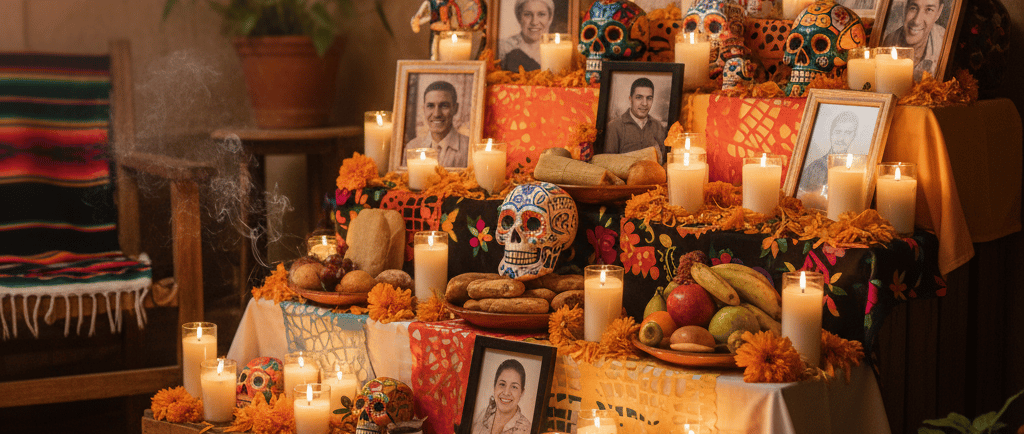Cinematic Travel Experiences | Value Trails| Hello Travelpayouts
Beyond the Sugar Skull – A Traveler’s Deep Dive into the Soul of Día de los Muertos
Discover the true meaning of Día de los Muertos—altars, marigolds, vigils, and traditions that celebrate love, memory, and the beauty of life.
DÍA DE LOS MUERTOS
9/3/20252 min read


Imagine this: the streets glow with thousands of candles, families gather in cemeteries not to mourn, but to celebrate, and the air is filled with music, laughter, and the sweet smell of marigolds. This isn’t a spooky Halloween night—it’s Día de los Muertos, Mexico’s most soulful and colorful tradition.
Most outsiders think of it as a “Mexican Halloween.” Wrong. It’s not about horror or tricks—it’s about love, memory, and honoring those who came before us. It’s a cultural treasure so unique that UNESCO has recognized it as an Intangible Cultural Heritage of Humanity. And honestly, once you experience it, you’ll never see life—or death—the same way again.
What is Día de los Muertos?
At its heart, Day of the Dead is a two-day celebration (November 1st & 2nd) when the veil between the living and the dead becomes thin. Families believe their loved ones return to spend time with them. And instead of quiet tears, people welcome the dead with food, music, stories, and laughter. It’s not about fear—it’s about connection.
This celebration is a beautiful blend of Aztec traditions and Catholic influences, creating something truly special: a holiday that’s both ancient and modern, spiritual and joyful, deeply personal and yet shared by all.
Symbols of the Celebration
When you walk through Mexico during these days, you’ll see powerful symbols everywhere:
Marigolds (cempasúchil) – Called the “flower of the dead,” these bright orange blooms are believed to guide spirits home with their vibrant color and strong scent.
Ofrendas (altars) – Built in homes and cemeteries, these are decorated with photos, candles, food, and personal items that the departed loved in life. It’s like saying, “Welcome back, we missed you.”
La Catrina – The elegant skeleton woman in a big hat is everywhere. She’s a satirical icon that reminds us: no matter how rich or poor we are, death unites us all.
Pan de Muerto – This sweet bread, often topped with bone-shaped decorations, is shared by families and placed on altars as an offering.
Cemetery vigils – Perhaps the most moving tradition of all. Families clean and decorate graves, light candles, and spend the night telling stories, singing songs, and celebrating the lives of their loved ones.
Why You Should Experience It
Día de los Muertos isn’t just a holiday—it’s an experience that touches your soul. It teaches us something we often forget in modern life: death is not the end, and love never disappears.
Travelers who visit Mexico during this time often describe it as one of the most meaningful experiences of their lives. You’ll see entire cities transformed into living works of art, markets overflowing with color, and families welcoming strangers to join their celebrations.
Final Thought
If you’re curious about visiting Mexico during this magical time, start here: open your heart, be respectful, and immerse yourself. It’s not a festival you just watch—it’s one you feel deep inside.
And trust me, once you’ve seen a cemetery glowing under thousands of candles, you’ll never forget it.
Explore
Your ultimate travel resource for adventures.
Connect
Support
info@valuetrails.com
© 2025. All rights reserved.